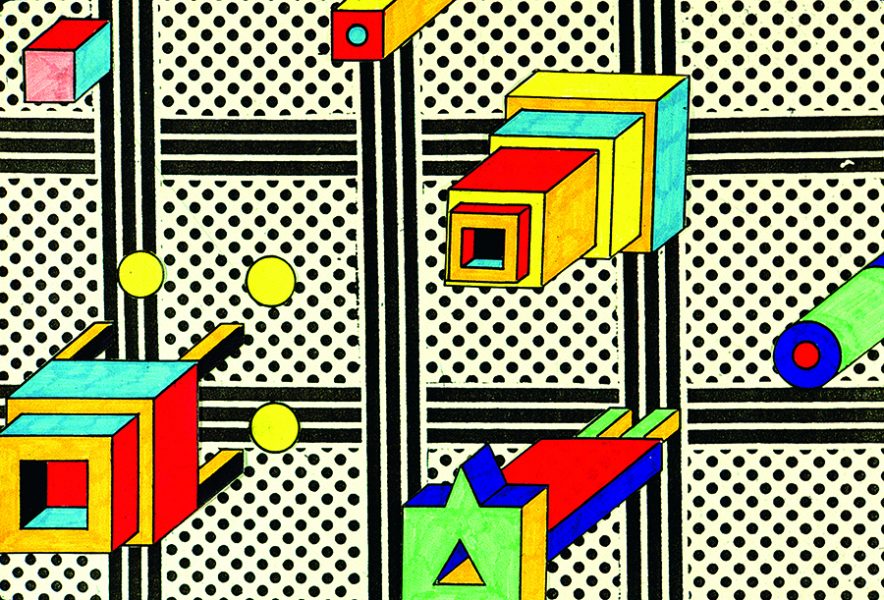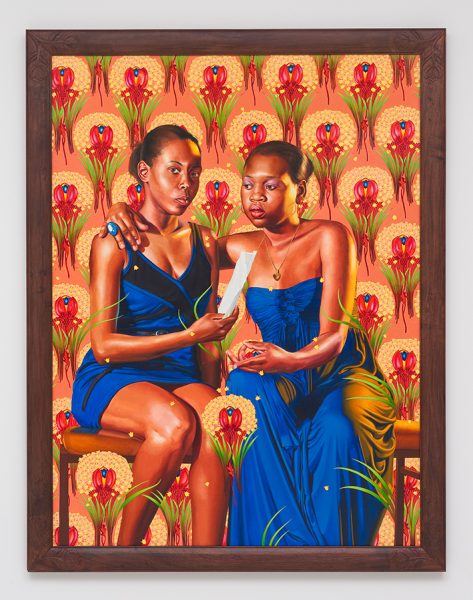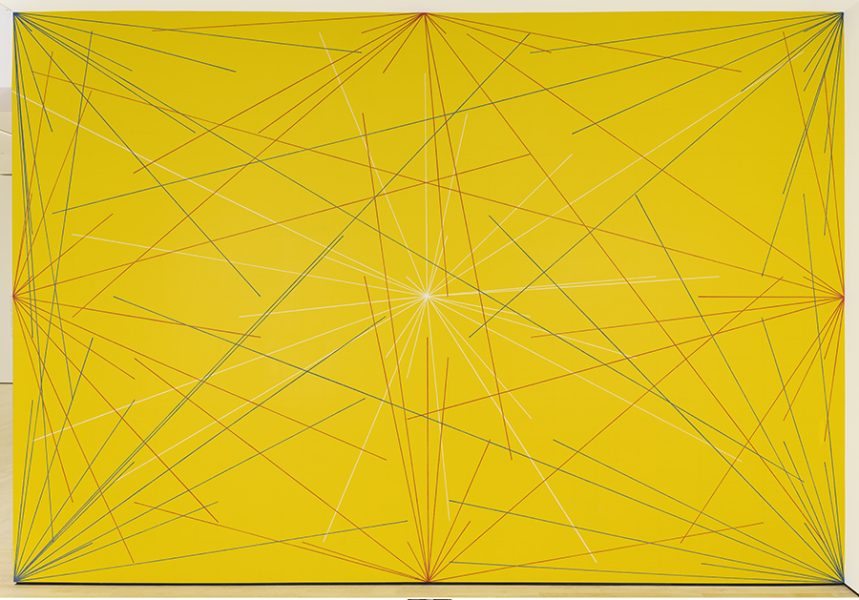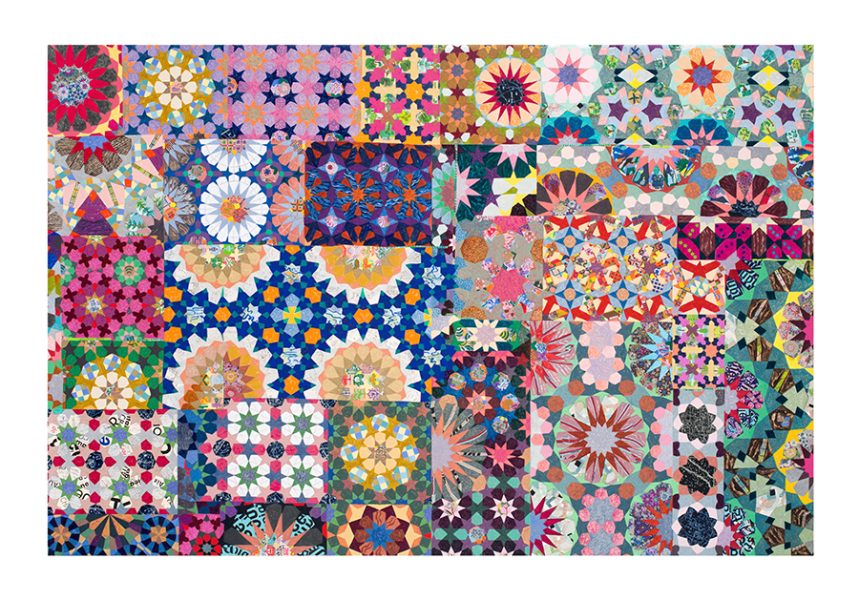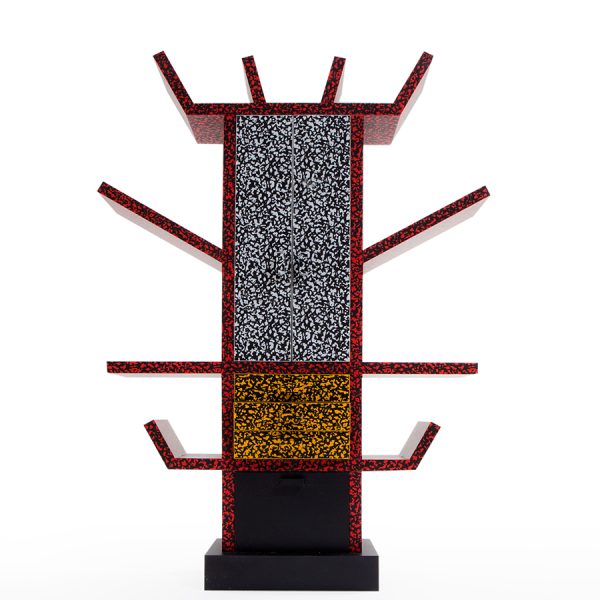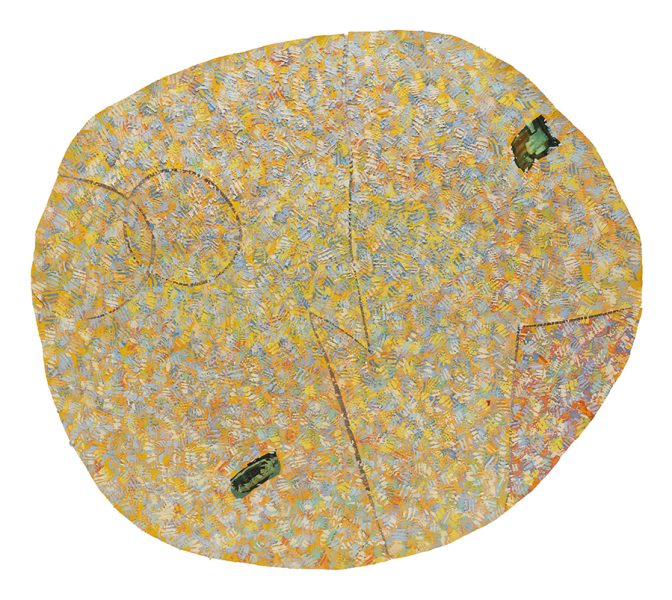Sweeping exhibition features work of an intergenerational group of artists, including Polly Apfelbaum, Sanford Biggers, Nathalie Du Pasquier, Jeffrey Gibson, Joyce Kozloff, Jasper Johns, Sol LeWitt, Virgil Marti, Howardena Pindell, Miriam Schapiro, Ettore Sottsass, and Kehinde Wiley
(Boston, MA—April 2, 2019) The Institute of Contemporary Art/Boston (ICA) presents Less Is a Bore: Maximalist Art & Design, a sweeping survey examining how artists have used ornamentation, pattern, and decorative modes to critique, subvert, and transform accepted histories and trajectories related to craft and design, gender, multiculturalism, beauty, and taste. Less Is a Bore begins in the early 1970s with works of art that sought to challenge established hierarchies that privileged fine art over applied art, and Western art over other art histories and traditions. The exhibition continues to the present, dipping into 1980s postmodern painting and appropriation art, multiculturalist expressions of the 1990s, and more recent craft-based practices that chart the legacy and transformation of these trajectories. The exhibition features more than 40 artists and is comprised of over 60 works, including a new site-specific, room-size installation by Virgil Marti and works made for the exhibition by Ron Amstutz, Polly Apfelbaum, Taylor Davis, Nathalie Du Pasquier, Dianna Molzan, and Pae White. On view June 26 through September 22, 2019, Less Is a Bore: Maximalist Art & Design is organized by Jenelle Porter, guest curator, with Jeffrey De Blois, Assistant Curator
“Less Is a Bore dazzles us with works by well-known artists like Sol LeWitt and Jasper Johns presented in a new light and alongside artists like Howardena Pindell and Miriam Schapiro who, in the 1970s, used materials and techniques long associated with craft, domesticity, and women. As with all of Jenelle’s exhibitions, she visually upends conventional thinking and established narratives, offering a more horizontal view of creativity and artistic production,” said Jill Medvedow, the ICA’s Ellen Matilda Poss Director.
“The artists in Less Is a Bore subscribe to a maximalist philosophy. They embrace heterogeneity, complexity, and excess. They resist expediency. The experience of the exhibition, in real life, is intended to be lush, crowded, overwhelming, seductive, haptic, adorned, patterned, and decorated,” said Porter.
Borrowing its attitude from architect Robert Venturi’s witty retort to Mies van der Rohe’s modernist edict “less is more,” the exhibition showcases a field of creative production that proves decoration, patterning, and ornament to be multivalent and exceedingly adaptable methods to make artworks that reference ideas, forms, and symbols at once personal and political, contemporary and historical, local and global. Less Is a Bore includes painting, sculpture, furniture, costume, print, collage, drawing, textile, video, film, photography, performance (in recorded forms), tapestry, and wallpaper. Spanning a concise fifty-year period, the exhibition focuses on shared connections among artists and designers who espouse strategies that include pattern, decoration, and maximalism, and on the ways that appropriation, quotation, and borrowing can in fact be considered tools of fidelity to original sources.
The first two rooms of the exhibition situate the work of artists associated with Pattern and Decoration, an art movement inaugurated in New York in 1975, such as Valerie Jaudon, Robert Kushner, Joyce Kozloff, Miriam Schapiro, and Robert Zakanitch alongside other works from the same era that challenged entrenched artistic categories. Jaudon’s Pantherburn (1979), a metallic painting that synthesizes the architectural language of Romanesque and Gothic arches, for example, hangs next to Sol LeWitt’s Wall Drawing 280 (1976), an architecturally-scaled work and one of the artist’s earliest to adopt color. The exhibition continues these juxtapositions, for example with formally similar patterning in Jasper Johns’s print Scent (1976), Howardena Pindell’s Autobiography: Artemis (1986), and Venturi, Scott Brown & Associates’s custom fabric Grandmother (1983).
The third room includes a gathering of works that explore the use of vegetal ornamentation, from arabesques and French curves to other natural motifs. Frank Stella’s Brazilian Merganser, 5.5X (1980) from his Exotic Bird series—which marked the artist’s radical turn to dimension, color, and shape—is viewed with Nancy Graves’s Trace (1979–80), a cast-bronze polychromed and patinated sculpture that resembles a schematic tree. The flower and plant motifs that characterize paintings by Christopher Wool and Philip Taaffe echo in Polly Apfelbaum’s floor-bound painting Small Townsville (2001) and Laura Owens’s frieze-like Untitled (2015), creating a rich constellation of works that share a vocabulary of ornamentation.
The exhibition continues by looking to both the decorated body and the body in décor. The provocative “Looks” of Leigh Bowery, an iconic and iconoclastic fashion designer and performer captured by photographer Fergus Greer, are presented along with Jeffrey Gibson’s DON’T MAKE ME OVER (2018), an adorned performance garment that hangs from horizontally suspended teepee poles. Miriam Schapiro’s Vestiture: Paris Series # 2 (1979), a robe shape composed of collaged printed fabrics is installed next to Ellen Lesperance’s Wounded Amazon series, colored gouache paintings based on knitting patterns that depict abstracted garments commemorating ancient and recent tragedies.
The final room of the exhibition gathers recent maximalist artworks and design objects. From Sanford Biggers’s painting on collaged antique quilts and Betty Woodman’s monumental installation of painted ceramic surfaces, to Marcel Wanders’s sensuous, golden Bon Bon chair and Virgil Marti’s decorated trompe l’oeil environment, these works demonstrate the continued significance of pattern, decoration, and maximalism in contemporary practice.
Artist list
Ron Amstutz (b. 1968, Youngstown, OH)
Polly Apfelbaum (b. 1955, Abington Township, PA)
Jennifer Bartlett (b. 1941, Long Beach, CA)
Sanford Biggers (b. 1970, Los Angeles)
Tord Boontje (b. 1968, Enschende, The Netherlands)
Leigh Bowery (b. 1961, Sunshine, Australia; d. 1995, London) and Fergus Greer (b. England)
Roger Brown (b. 1941, Hamilton, AL; d. 1997, Atlanta)
Taylor Davis (b. 1959, Palm Springs, CA)
Nathalie Du Pasquier (b. 1957, Bordeaux, France)
Monir Shahroudy Farmanfarmaian (b. 1922, Qazvin, Iran; d. 2019, Tehran, Iran)
Jeffrey Gibson (b. 1972, Colorado Springs, CO)
Nancy Graves (b. 1939, Pittsfield, MA; d. 1995, New York)
Valerie Jaudon (b. 1945, Greenville, MS)
Jasper Johns (b. 1930, Augusta, GA)
Joyce Kozloff (b. 1942, Somerville, NJ)
Robert Kushner (b. 1949, Pasadena, CA)
Ellen Lesperance (b. 1971, Minneapolis)
Sol LeWitt (b. 1928, Hartford, CT; d. 2007, New York)
Liza Lou (b. 1969, New York)
Babette Mangolte (b. 1941, Montmorot, France) and Lucinda Childs (b. 1940, New York)
Virgil Marti (b. 1962, St. Louis)
Dianna Molzan (b. 1972, Tacoma, WA)
Joel Otterson (b. 1959, Los Angeles)
Laura Owens (b. 1970, Euclid, OH)
Howardena Pindell (b. 1943, Philadelphia)
Lari Pittman (b. 1952, Los Angeles)
Ruth Root (b. 1967, Chicago)
Lucas Samaras (b. 1936, Kastoria, Greece)
Zoe Pettijohn Schade (b. 1973, Boston)
Miriam Schapiro (b. 1923, Toronto; d. 2015, Hampton Bays, NY)
Ettore Sottsass (b. 1917, Innsbruck, Austria; d. 2007, Milan)
Frank Stella (b. 1936, Malden, MA)
Stephanie Syjuco (b. 1974, Manila, Philippines)
Philip Taaffe (b. 1955, Elizabeth, NJ)
Venturi, Scott Brown & Associates (founded 1960 as Venturi & Associates, Philadelphia)
Marcel Wanders (b. 1963, Boxtel, The Netherlands)
Pae White (b. 1963, Pasadena, CA)
Kehinde Wiley (b. 1977, Los Angeles)
Franklin Williams (b. 1940, Ogden, UT)
Betty Woodman (b. 1930, Norwalk, CT; d. 2018, New York)
Christopher Wool (b. 1955, Chicago)
Haegue Yang (b. 1971, Seoul)
Ray Yoshida (b. 1930, Kapaa, Hawaii, HI; d. 2009, Kauai, HI)
Robert Zakanitch (b. 1935, Elizabeth, NJ)
Catalogue
The exhibition is accompanied by a richly illustrated publication featuring essays by Elissa Auther, Amy Goldin, and Jenelle Porter.
Exhibition press preview
June 25, 2019 | 9:30–11:00 AM
Media are invited to attend a tour of the exhibition led by Jenelle Porter. RSVP to Margaux Leonard, mleonard@icaboston.org.
Exhibition-related programs
The presentation of Less Is a Bore: Maximalist Art & Design will be enriched by gallery talks and artist talks. More details to be announced soon.
About the ICA
Since its founding in 1936, the ICA has shared the pleasures of reflection, inspiration, imagination, and provocation that contemporary art offers with its audiences. A museum at the intersection of contemporary art and civic life, the ICA has advanced a bold vision for amplifying the artist’s voice and augmenting art’s role as educator, incubator, and convener for social engagement. Its innovative exhibitions, performances, and educational programs provide access to contemporary art, artists, and the creative process, inviting audiences of all ages and backgrounds to participate in the excitement of new art and ideas. Spanning two locations across Boston Harbor, the ICA offers year-round programming at its iconic building in Boston’s Seaport and seasonal programming (May-September) at the Watershed in an East Boston shipyard.
The ICA is located at 25 Harbor Shore Drive, Boston, MA, 02210. The Watershed is located at 256 Marginal Street, East Boston, MA 02128. For more information, call 617-478-3100 or visit our website at icaboston.org. Follow the ICA at Facebook, Twitter, and Instagram.
Support for Less Is a Bore: Maximalist Art & Design is generously provided by Kate and Charles Brizius, Karen and Brian Conway, Fotene Demoulas and Tom Coté, Alan and Vivien Hassenfeld, Jodi and Hal Hess, Tristin and Martin Mannion, and Cynthia and John Reed.
Support for the Less Is a Bore publication provided by Peggy J Koenig and Dell and Tim Mitchell.
